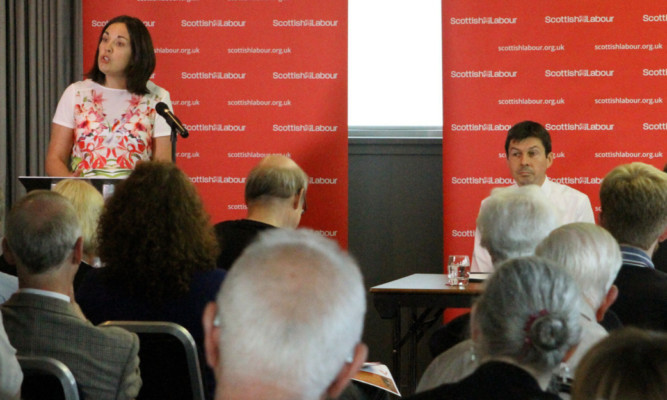Labour leadership hopeful Ken Macintosh accused fellow contender Kezia Dugdale of “fighting a class war” during a debate in Dundee.
In a packed auditorium, the two candidates clashed over charitable status for private schools.
Ms Dugdale has pledged to scrap the dispensation, which provides a tax break for the elite institutions.
But Mr Macintosh hit back, claiming Ms Dugdale was wrong to focus on the issue.
The Eastwood MSP told the audience at the hustings: “I wish that our state schools were so good that nobody feels the need to send their children to different schools.
“But we should not be fighting a class war. I believe in a pluralist system.”
Ms Dugdale defended her position to the crowd at Dundee’s Apex Hotel saying it was “a point of principle”.
The Lothian region MSP added: “Save The Children that’s a charity. Fettes is not.”
Both candidates set out their agendas in a bid to gather support ahead of the leadership ballot, which begins on July 21.
The pair were quizzed by Labour supporters and others on issues including the economy, the future of the NHS in Scotland and how to improve female participation in sport.
Mr Macintosh said: “I’m not prepared to run up the white flag on Labour. Our values are too important to give up fighting for.
“I know many of my MSP colleagues are worried about next year, they’re scared about their own seats and their prospects.
“When facing such a difficult fight, there is a temptation to follow the path of least resistance, to go with what’s in front of you rather than face up to the difficult and challenging questions about our future. To win again and rebuild trust, Labour does not simply need a new generation, we need to demonstrate we’ve changed.”
Ms Dugdale said the Labour party was in a difficult situation, but urged party members not to give up hope.
The former deputy leader said: “I wish we weren’t here. I wish we’d won. But the (general election) result was the latest in a series of defeats.
“Here in Dundee, Labour majorities have been turned into SNP strongholds. This has been years in the making. We cannot just keep calm and carry on.
“We need to show people we stand for them. We need to make it clear what we stand for.”
After the would-be leaders spoke, candidates to fill the deputy leadership position, including Cowdenbeath MSP Alex Rowley, also spoke to members of the audience and answered questions.Not yet ship-shapeEdward Smith, the infamous captain of the Titanic, didn’t know how to change course, writes Andrew Liddle.
It was his one failing in an otherwise illustrious career as a master of choppy seas. And it was, of course, a fatal failing.
Last night, the two Scottish Labour leadership candidates tried to set out their vision of how they would avoid that deadly iceberg.
Ken Macintosh argued that the party needs to, in effect, head to the lifeboats. He said the movement should be broken down and less centralised, with a much greater role for local members and operations. He argued against a “new generation” of leaders.
In contrast, Kezia Dugdale had a more direct approach.
The Titanic-like movement that is Scottish Labour could not, she argued, continue in the same direction.
It must change course to win back the trust of the passengers and presumably, given her recent comments on the charitable status for private schools, those passengers in steerage first.
Yet both would-be captains failed to really bring out the compass and identify what direction they would take the party. Even with two potential leaders on the stage, the Labour movement, in truth, still felt like a rudderless ship.
Just like Edward Smith, there was little sign of a change of course and there are lots of icebergs in the waters ahead.
